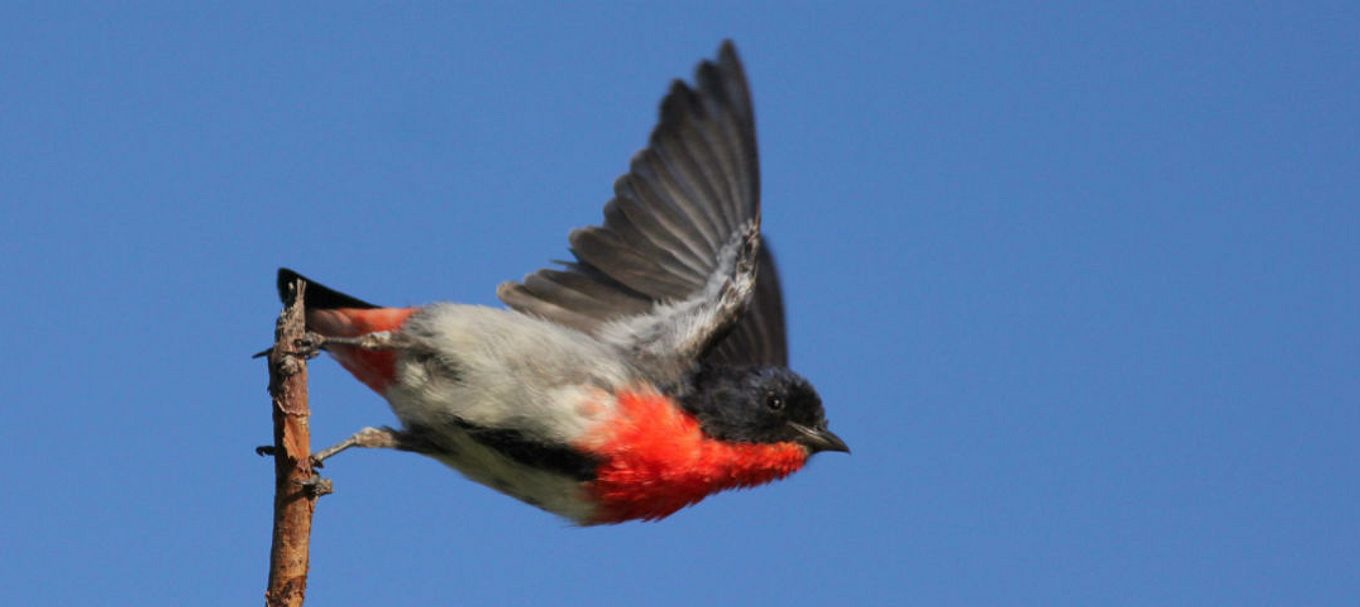
Understand the connection between some of SA’s flora and fauna
Everything in nature is connected, so it’s no surprise that native plant and animal species rely on each other to survive and thrive.
While it might be easy to understand and imagine the ways in which animals rely on plants to survive, the way plants rely on animals may be a little less obvious. So let’s take a closer look at mistletoe and the mistletoebird to get a better understanding.
Mistletoe: the food source
You might be most familiar with mistletoe as the Christmas decoration that could get you a kiss – if you stand under it long enough! – but it’s also an important food source for a particular species of bird.
Misteltoebirds (Dicaeum hirundinaceum) love mistletoe berries – it’s their favourite food. They gobble them up, but interestingly they don’t digest the seed inside the berries.
From mouth to… well, you know where we’re going with this… Let’s just say the mistletoe seed can make its way through the mistletoebird in as few as four minutes. Despite this quick process, the bird manages to draw plenty of nutrients from the berry.
Once the seed has passed through their system it is planted where it lands. Or more accurately, the undigested stickiness helps the seed stick to whatever plant it lands on, and from there it can grow.
Mistletoe: the parasite
In Adelaide, there are two species of mistletoe you’re likely to spot box mistletoe (Amyema miquelii) and harlequin mistletoe (Lysiana exocarpii).
Mistletoe is a parasite, which might automatically make you think it is bad, but it really just means that it relies on something else to survive – in this case, trees.
Mistletoe doesn’t have roots but it does have something similar called a haustorium, a highly modified root that penetrates the host tree tissue, which is how it can tap into, and feed from, the tree it grows on.
It draws some of the nutrients it needs from the tree but because it can actually create some of the nutrients it needs itself, it’s only considered a half parasite.
Mistletoe: the reputation
Mistletoe has a reputation as a tree-killer because it’s thought that their overabundance on a host tree can lead to its death. But this status is not completely accurate and the link between mistletoe abundance and tree decline is not straightforward.
On its own, mistletoe is not commonly the reason for tree deaths, however, it might contribute to them when combined with other stressors such as drought.
According to the authors of ‘Mistletoe, friend and foe: synthesizing ecosystem implications of mistletoe infection’, mistletoe can actually be beneficial to an overall ecosystem by helping improve biodiversity.
In fact, one study showed that three years after removing mistletoe from woodland sites, almost 30 per cent of woodland-dependent bird species were lost.
Some of the information in this blog is derived fromAdelaide: nature of a city, edited by Chris Daniels and Catherine J. Tait.Professor Chris Danielsis also Presiding Member of theAdelaide and Mount Lofty Ranges Natural Resources Management Board.
If you’re interested in learning more unusual insights about some of the plants and creatures that call South Australia home, you might like our stories aboutspitfires,flying foxes, andweeds.
(Main image: Mistletoebird courtesy of Martin Stokes)





